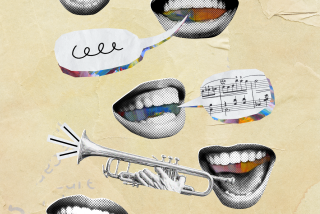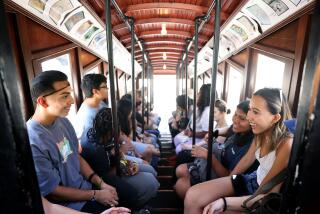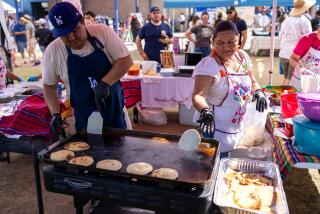Knowledge Reigns Supreme at Pan Am Festival
If the whole point of the Community Magnet School’s Pan American festival was to teach children about ancient Central American culture, then the parents, teachers and administrators who poured their hearts and souls into Friday’s event failed miserably.
As the kids told their well-meaning adult supervisors: There was simply nothing left to learn.
By the time a 10-foot cardboard Mayan temple was erected in their playground and documentary videos were set up across their campus, students in the Los Angeles humanities magnet school had absorbed an almost anthropological understanding of various ancient civilizations.
The festival was nice, they said. But, really, it was unnecessary.
“I know all of this stuff,” fifth-grader Muriel Payan, 10, said as she stood in the playground and reflected upon the cardboard pyramid that served as the centerpiece of the festival. “What I didn’t know was that Central American culture was so popular. I always thought it was not well known.”
From the bright-eyed kindergartners to the articulate and precocious fifth-graders, the students had done their homework and were able to recognize and discuss the intricacies of Mayan, Aztec and Incan societies.
“Traditionally only jaguar guards would wear jaguar skins. They were seen as sacred animals, and the skin was extremely valuable,” said Noah Silas, 11, a fifth-grader who spent part of his afternoon holding a decorative shield and a lively tutorial about Mayan traditions.
Noah and his friend Marcus Franks, 9, were standing in as jaguar guards at the mouth of the Mayan pyramid while the real jaguar guards--older, taller boys--had their fortunes told.
“If these were real, the feathers would be spikes,” Marcus said, discussing the decorated shield.
“No it wouldn’t,” Noah countered. “You didn’t read the paper, did you?”
Knowledge reigned king at the festival, but not everyone gained insight through literature and class curriculum. Over 50 cultures are represented in the 360-student magnet school, Principal Pamela Marton said. And in such a multicultural setting, some of the best education happens on the playground.
“We’ve never really done this before,” fifth-grader Gianna Sami, 10, said about the Pan American festival. As she carved a soap sculpture of herself at the Olmec head carving booth, Gianna said: “We don’t really have to learn about [other cultures] because we just kinda have it.”
And what the school didn’t have, it brought in.
Folklorico dancers were bused in from Glassell Elementary School in Los Angeles to perform during an afternoon assembly. Artifacts were donated through various Latino and American Indian organizations. And an Incan band was hired to play authentic music, said Renee Shapiro, a parent and teacher who organized the festival.
“It’s ambitious,” she said. “But we all enjoyed fantasizing how the students would react to all [the festival]. It’s wonderful to capture the imagination of the children.”
More to Read
Sign up for Essential California
The most important California stories and recommendations in your inbox every morning.
You may occasionally receive promotional content from the Los Angeles Times.










